Autodesk Maya 2020 and Arnold Render
This is where things get really interesting, as Arnold is Autodesk’s latest ray tracing renderer designed to meet the demands of feature length animation and visual effects. Arnold is used in over 300 studios worldwide, including ILM, Framestore, MPC, The Mill and Digic Pictures among others. Arnold has also been the primary renderer on dozens of films, from Monster House and Cloudy with a Chance of Meatballs to Pacific Rim and Gravity . He is available as a standalone renderer for Linux, Windows, and Mac OS X, and as a plug-in for Maya, 3ds Max , Houdini, Cinema 4D, and Katana.
The combination of fast, RTX-accelerated rendering with OptiX and GPU-accelerated AI denoising (denoising filters) also enables rapid iteration through changes in materials, lighting, camera position, and environment, and the effects are visible with lightning-fast updates. The OptiX denoiser is built into Arnold for use with IPR and Look Dev and can be applied to any AOV. The performance of the AI-Denoiser in the editing phase is strikingly high, but it is recommended to use the Arnold-Denoiser in the final rendering to avoid sporadic flickering. But I don’t think anyone will ever think of rendering the finished film on a notebook. Not yet.
You can see the advantage of the RTX cards over the older Pascal models very clearly, as the slowest Turing RTX is still almost twice as fast as the older Pascal flagship. That’s what it takes to make it.
The bottom line is that the performance of the notebook is as expected, but it has to be said that the use of OptiX alone means that even the older battleships, such as a Quadro P6000, are extremely outclassed, and the CPU also takes a back seat.
Blender
Blender is an extremely popular free and above all also open source 3D suite. It supports almost the full range of 3D pipeline modeling, rigging, animation, simulation, rendering, compositing and motion tracking, video editing, and 2D animation. So basically almost everything that the topic gives. Already since the release of the 2.81 update, Blender now supports RTX-accelerated rendering with the NVIDIA OptiX rendering API in the Cycles renderer, including the AI denoiser.
Before you can render anything, you first have to edit it. But how fast is the 3D real-time view when creating and editing the scene? The answer is given by the 3D loop, where the Max-Q graphics can still do quite well. Liquid is that in any case, not just wire mesh.
Now let’s move on to the rendering. First, let’s take stock with CUDA vs. OpenCL first, which includes all Radeon cards. Purely in terms of computing power, even the notebook with the 95-watt GPU and CUDA is still quite competitive, also a realization. But you don’t have to try that with the CPU, unfortunately it doesn’t do anything.
OptiX shortens render times on NVIDIA’s RTX GPUs and speeds up rendering even more compared to CUDA or OpenCL. Measuring final render times is a great way to evaluate GPU capabilities when it comes to working efficiently and as unobstructed as possible. No one here cares about the CPU anymore.
What stands out in these benchmarks is the sometimes almost stepmotherly implemented OpenCL implementation of the Radeon VII, which almost falls into a black hole compared to the Navi cards in some situations. You get the feeling that they just stopped tweaking somewhere. But today we’re talking about the notebook, and it’s anything but a total failure.















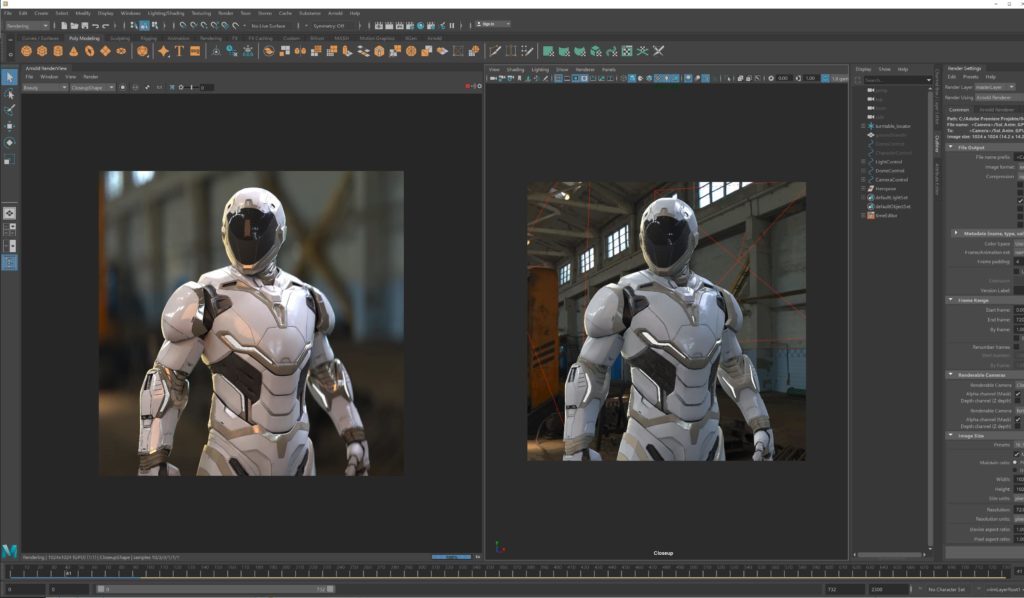
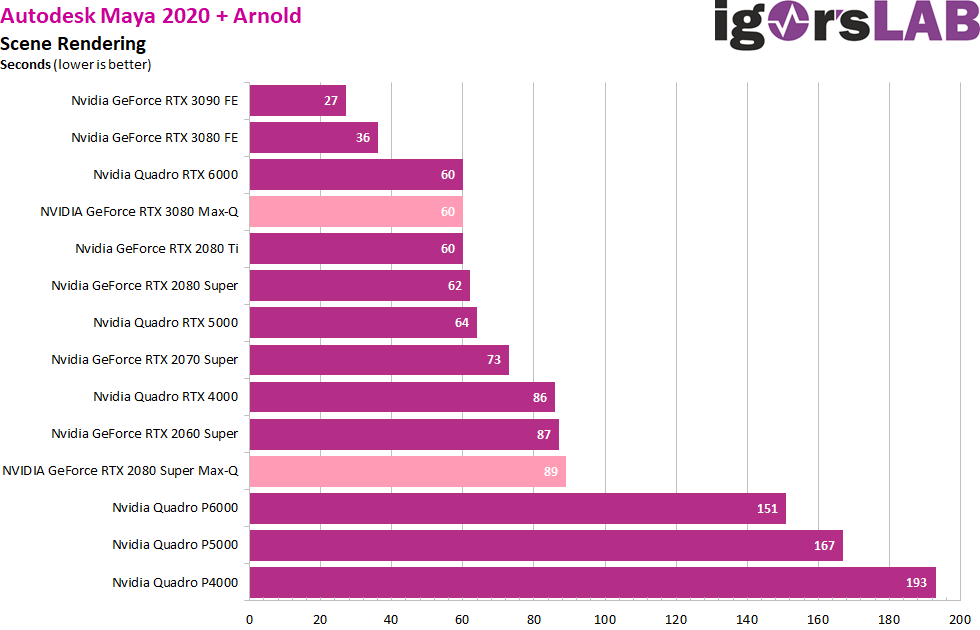
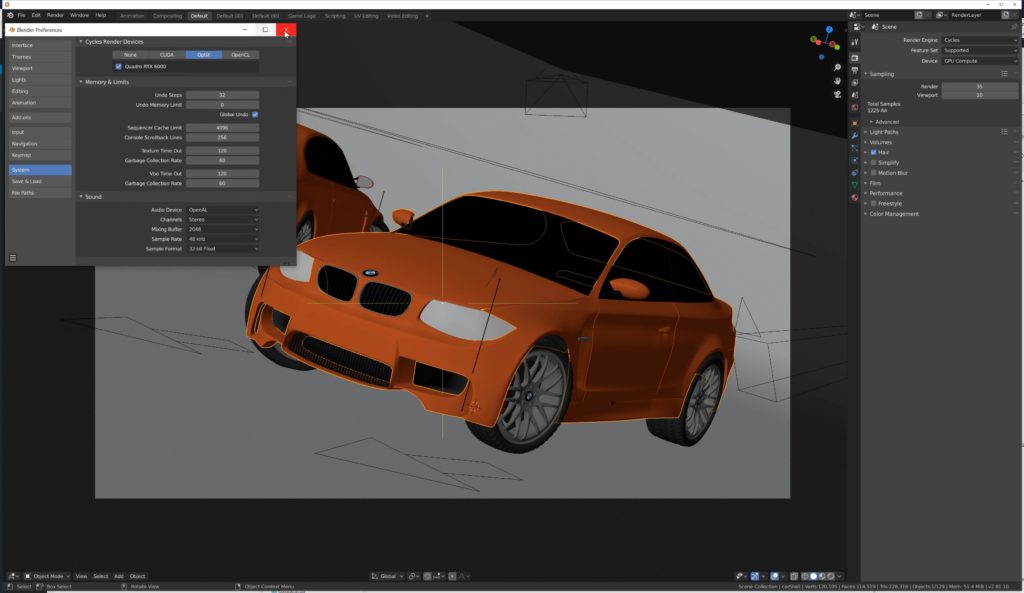
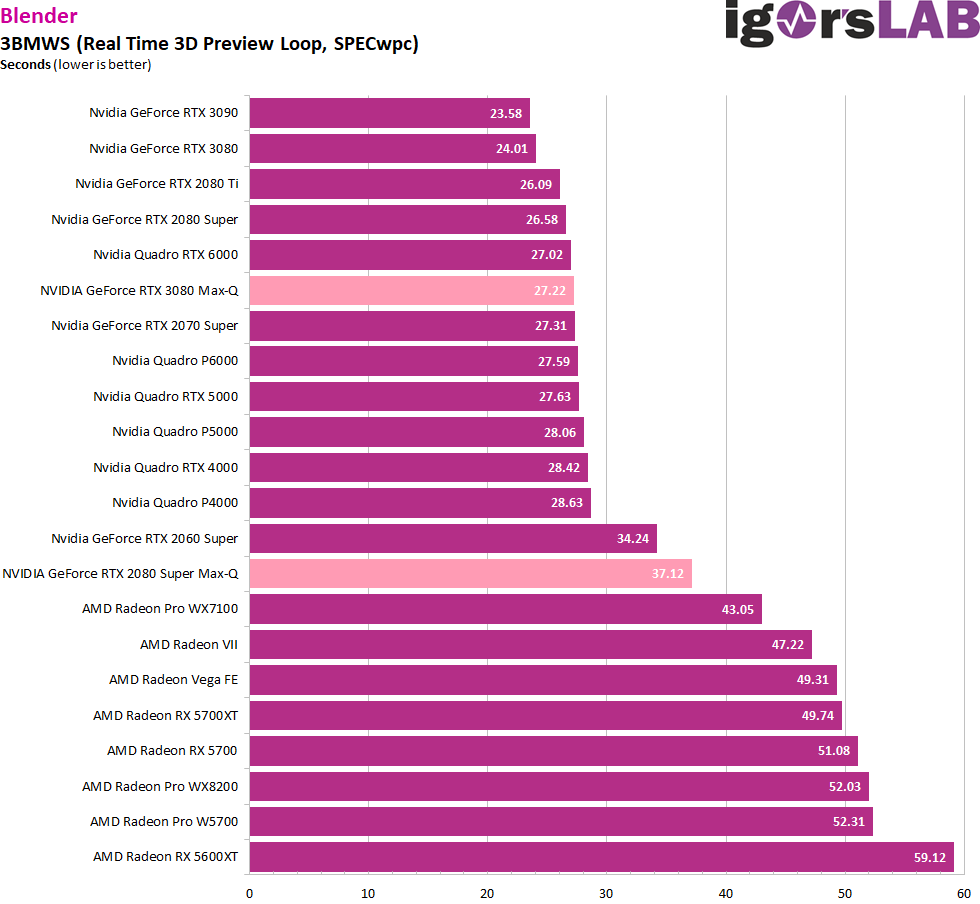
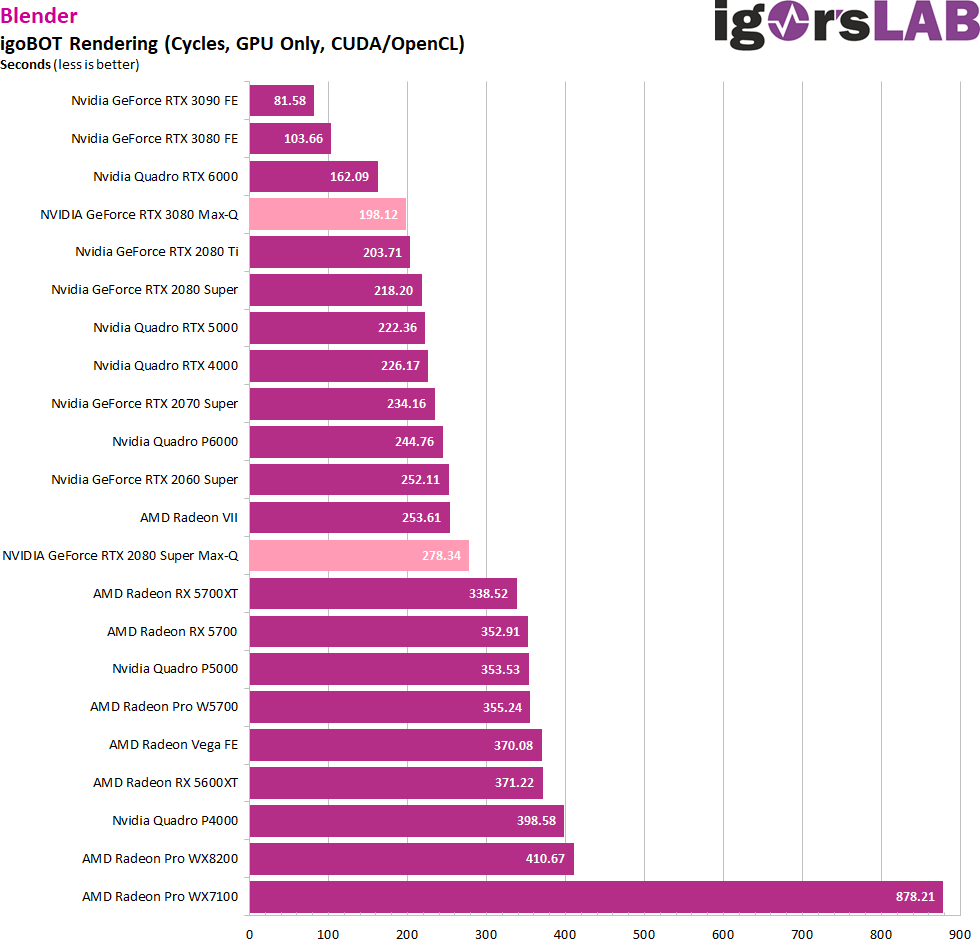
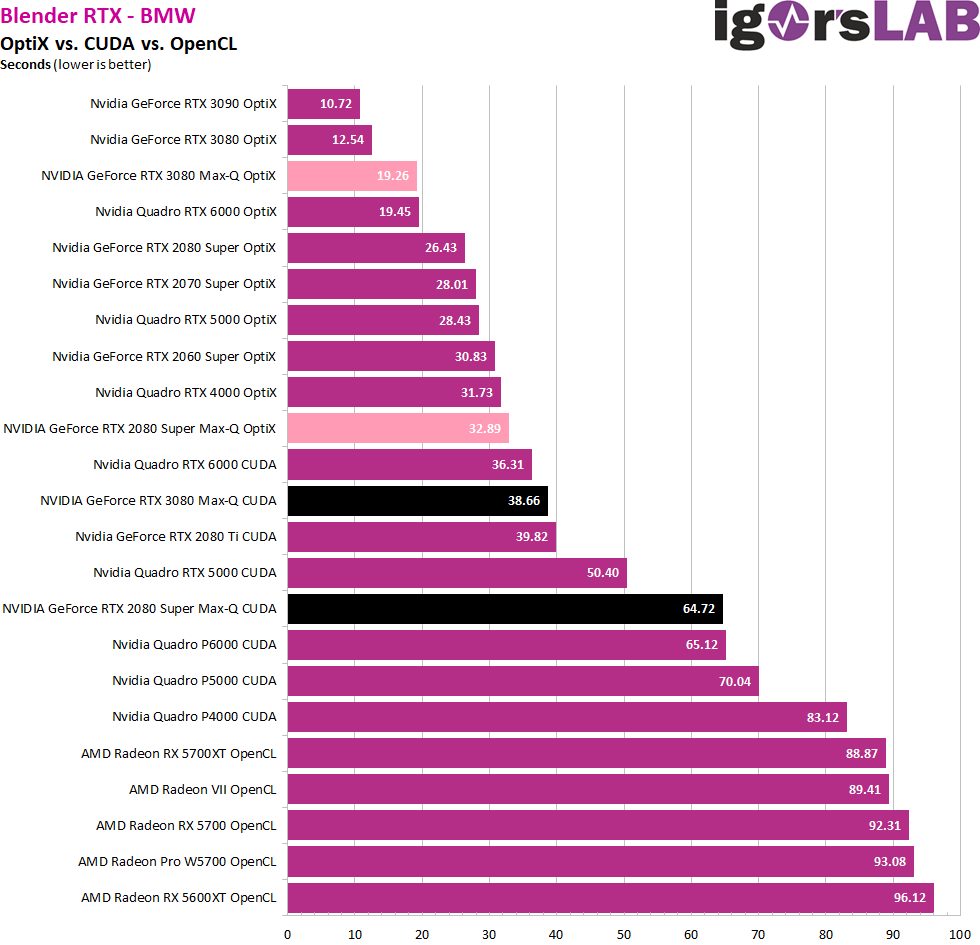
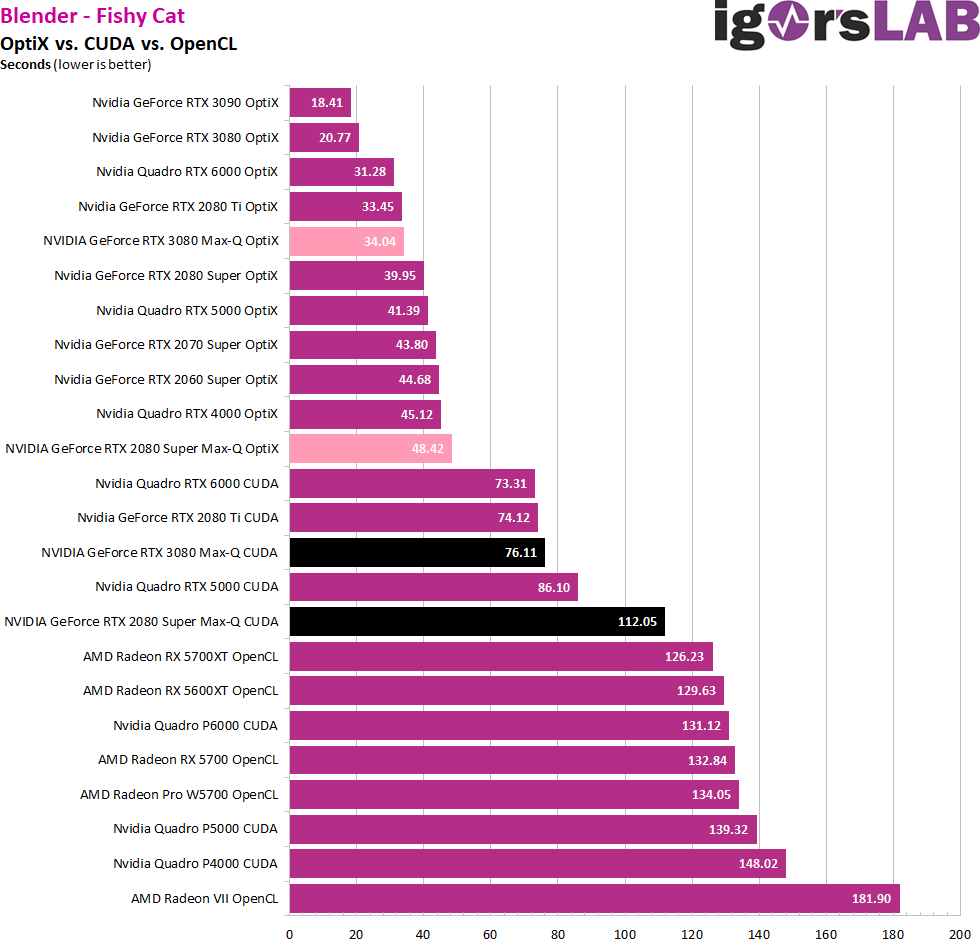

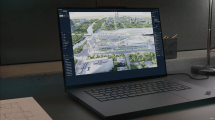
















21 Antworten
Kommentar
Lade neue Kommentare
1
Mitglied
Veteran
Urgestein
Urgestein
Urgestein
Urgestein
Urgestein
Mitglied
Urgestein
Urgestein
Urgestein
Urgestein
Urgestein
Mitglied
Urgestein
1
Urgestein
Alle Kommentare lesen unter igor´sLAB Community →